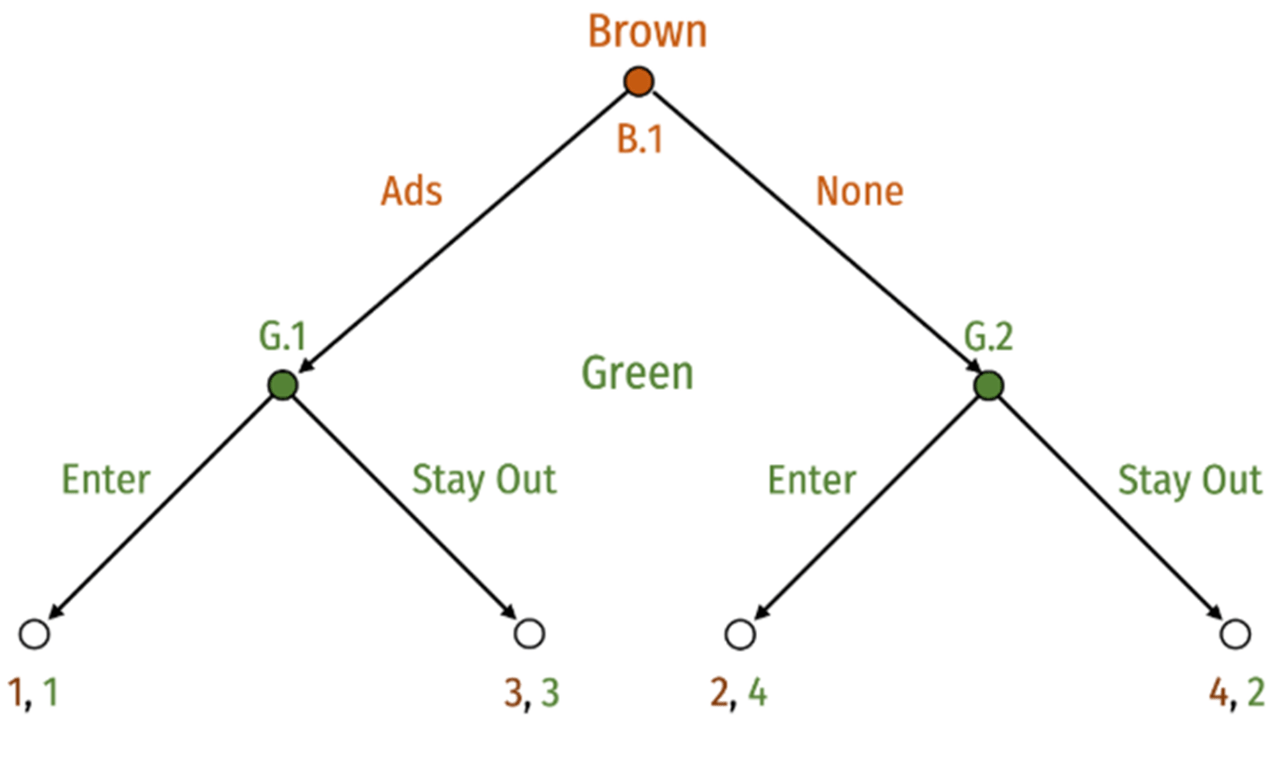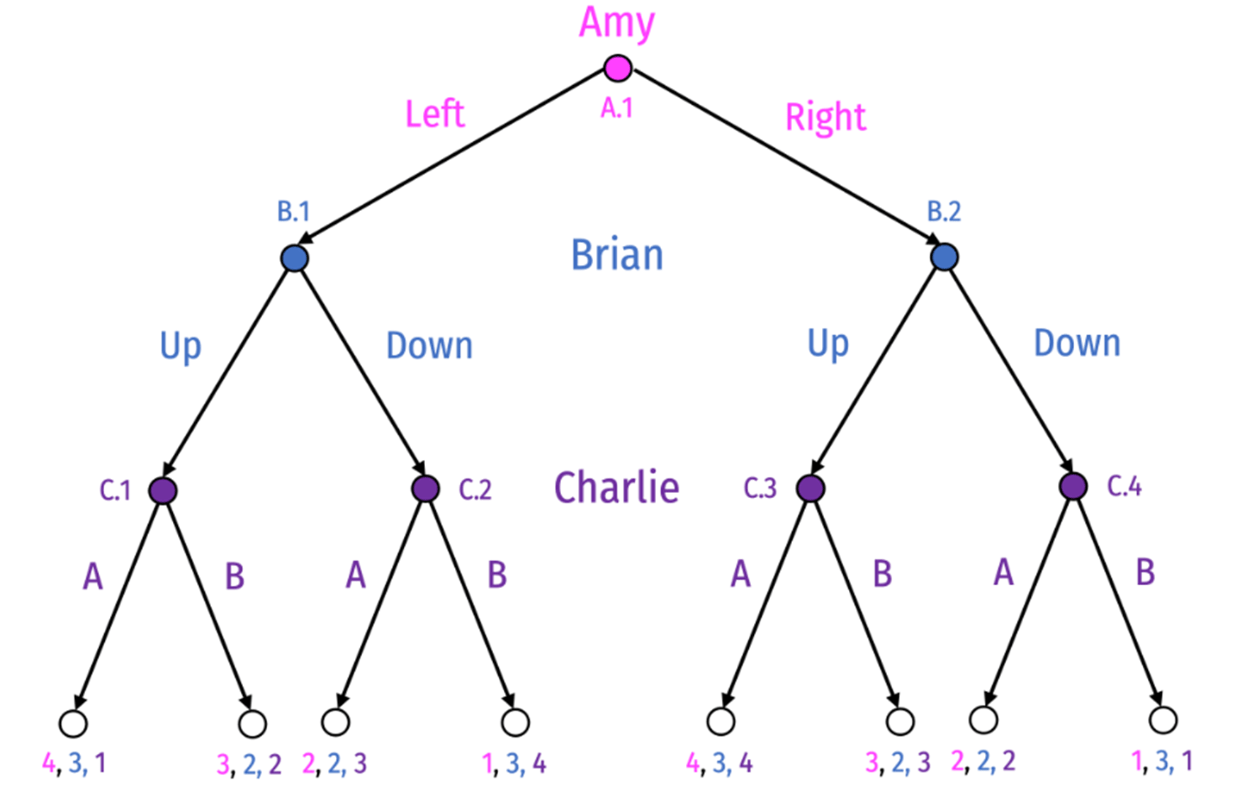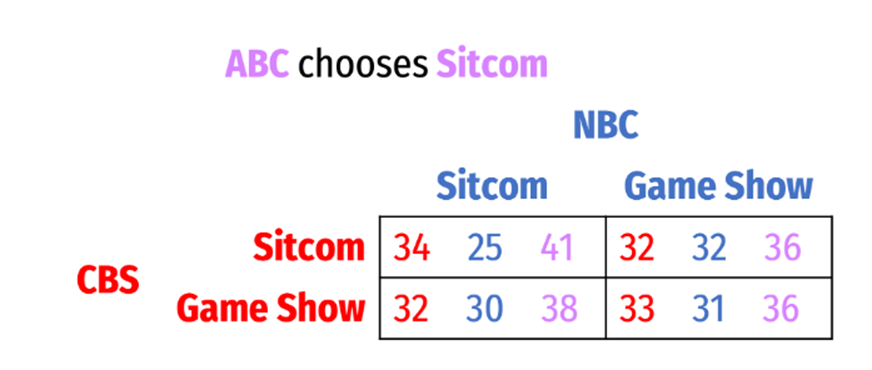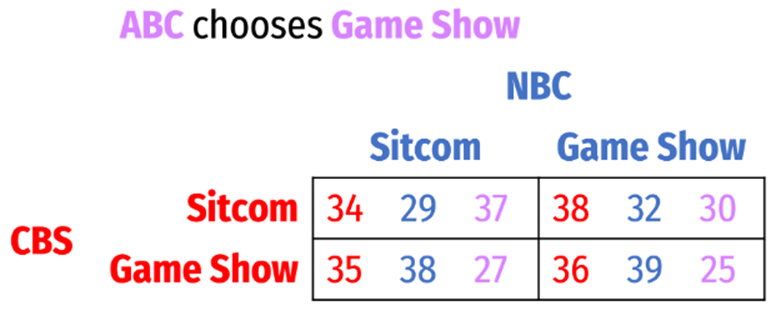This is the process through which we find the Nash equilibrium of a sequential game.
Backward induction
This term refers to the idea that players in a simultaneous game don't know which strategies other players are going to pick before they choose their own strategy.
Strategic uncertainty.
Without pre-game communication, expectations must converge on a _______________________.
Focal point
Bertrand, Cournot and Stackelberg (the order of the last two does not matter).
For contestable markets, we model the market as an _____________ game.
Entry
The idea that nature and probability do not interfere between choices and outcomes refers to which part of the perfect information assumption of sequential games?
No external uncertainty
Find the Nash equilibrium of the game below.

______________ refers to the idea that early choices may affect someone's ability to later choose or switch to a different option.
Path dependence
In Bertrand duopolistic competition, the Nash equilibrium occurs at which point?
P_1 = P_2 = MC
When the entrant and incumbent firms have identical costs, this is the Nash equilibrium price and profit level.
P^* = MC, Pi = 0
If the first player in a sequential game can essentially rig the game in their favor, that player is to have a...?
First-Mover Advantage
A player has a __________________ when it yields a higher payoff than all other strategies available, regardless of what strategy the other is playing.
Dominant strategy
A special case of coordination game where one equilibrium is universally preferred is a(n)...?
Assurance Game
If P = 10 - 2Q, MC = AC = 2, and
Q = q_1 + q_2, find profits for both firms 1 and 2 in this collusive Cournot duopolistic scenario.
Pi_1 = Pi_2 = $4
When an incumbent firm has fixed costs, it sets its price equal to what...?
Its average cost.
Find the Nash Equilibrium of the game below.

(Ads, Stay Out) or (3,3) - I'll accept either
A player has a __________________ when it yields a lower payoff than all other strategies available, regardless of what strategy the other is playing.
Dominated strategy
This term refers to a form of path dependency that is sensitive to initial conditions with no inefficiency.
First-degree path dependency
If P = 10 - 2Q, MC = AC = 2, and Q = q_1 + q_2, , find profits for both firms 1 and 2 in this non-collusive Cournot duopolistic scenario. Round to two decimal places at each step.
Notes:
q_1 = q_2 = 1.33
P = 10 - 2(2.66) = 4.68
Answer: Pi_1 = Pi_2 = 3.56
These are the three conditions for contestable markets.
There are no barriers to entry or exit.
Firms have similar technologies (i.e. cost structures).
There are no sunk costs.
Find the Nash equilibrium of the game below.

Solve for the Nash equilibrium of the three-player simultaneous game below.


(Game Show, Game Show, Sitcom) or (33, 31, 36) - I'll accept either.
This term refers to a form of path dependency that is sensitive to initial conditions, where initially the worse choice is made, and when that choice is an avoidable mistake at the time.
Third-degree path dependency.
If P = 10 - 2Q, MC = AC = 2, and Q = q_1 + q_2, , find profits for both firms 1 and 2 in this Stackelberg duopolistic scenario. Assume firm 1 is the first-mover. Round to two decimal places at each step if necessary.
Notes: q_1 = 2 , q_2 = 1
P = 10 - 2(2) - 2(1) = $4
Answers: Pi_1 = $4, Pi_2 = $2
When an incumbent firm has sunk costs, it sets its price level at..?
P > AC